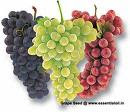Hong Kong-based researchers explain that N15-(carboxymethyl) lysine (CML) is an undesirable byproduct of glycation (simple sugar molecules
 combining with proteins or fats), and is widely found in bread, particularly in the crust. “Currently it is viewed as a potential toxicant in food,” wrote the researchers. “Moreover it has become a biomarker associated with oxidative stress, atherosclerosis and diabetes in humans.”
combining with proteins or fats), and is widely found in bread, particularly in the crust. “Currently it is viewed as a potential toxicant in food,” wrote the researchers. “Moreover it has become a biomarker associated with oxidative stress, atherosclerosis and diabetes in humans.”Addition of an extract from grape seed was found to not only boost the antioxidant activity of the bread, thereby offering the promise of a functional food, but also reduced CML levels, thereby lowering the potential health risks associated with this compound, wrote the authors, led by Xiaofang Peng from the University of Hong Kong in Food Chemistry.
According to the new findings, addition of the grape seed extract (GSE) reduced the levels of CML in a dose-dependent manner, meaning the more GSE used, the less CML formed.
“In our analysis, CML content determined in blank bread crust (35 mg/kg food) was close to the literature data [of 37.1 mg/kg food],” state the researchers. “Addition of GSE dose-dependently reduced CML content in bread crust relative to the control. In particular, adding 600 and 1000 mg of GSE to bread (500 g) led to over 30 and 50 per cent reduction in bread crust CML content, respectively,”
An improvement in the antioxidant activity was also recorded in the bread samples prepared with the extract, but compared to free GSE, thermal processing reduced the antioxidant activity by approximately 30 to 40 per cent. “These data suggest that the thermal processing in bread making might lower the antioxidant capacity of GSE,” wrote Peng and co-workers.
Sensorial tests by a panel of tasters revealed no significant difference in hardness in bread samples with and without GSE, up to levels of one gram of GSE per 500 grams of bread. Furthermore, a change in colour was observed on addition of the extract, and 70 per cent panelists expressed a preference of this over the blank bread.
Fuente: http://www.foodqualitynews.com/
Aporte: Alejandra Lavin
No hay comentarios.:
Publicar un comentario